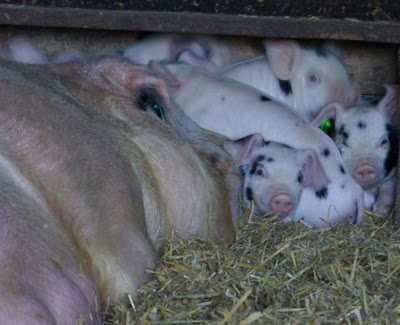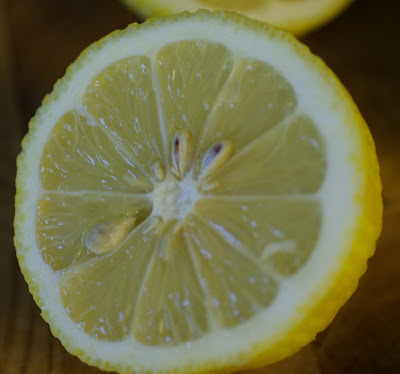I love bread. If bread were a person it would have been the recipient of my Valentine's card last Thursday. I was, therefore, very excited when I saw that this month's Daring Bakers' challenge was Julia Child's French Bread (thank you Mary and Sara). I've made basic bread recipes before but I have never tackled baguettes. My early memory of the long French sticks is getting them at the supermarket with my mum, seeking out the warmest and then pulling the end (nub) off and eating it as mum did the rest of the shopping. Yum.
Despite having so few ingredients this recipe was surprisingly long and a little daunting. All in all, it took about eight hours to make which does seem a bit overwhelming. That said, you're not chained to the dough for all that time so you can get on with your non-bread related life in between stages. As much as I would love, love, love a Kitchen Aid (they're a bit too expensive in the UK) I was glad that I had to make the bread dough by hand. For me, one of the best things about making homemade bread is how tactile the process is and there's nothing better for a bad mood than kneading dough. In fact, instead of giving aggressive teenagers ASBOs maybe they should get them all to make bread. And then, they could distribute the bread to the homeless. Now how's that for sensible domestic policy?!
First Mixing - pre exercise:
Although the recipe seems complicated, it is actually quite simple if you are methodical. My big fear was not having a warm enough area in which to let the dough rise. Luckily, my clucky anxious parent thing kicked in and I tucked in the bowl next to a radiator with a hot water bottle and a thick blanket. It's all about treading your dough how you'd like to be treated yourself.
In the end, the results were well worth the effort. I have to admit that I didn't wait for the bread to cool down entirely (okay, at all) before I sampled it, but surely the main perk of bread baking is getting to enjoy it while it's hot? I think it's in the film Amelie where she says that one of her mum's favourite things is the sound of fresh bread breaking and, as I snapped a piece off my wonky baguette and heard the 'shattering' sound, I had to agree. So satisfying. I thought the texture of the bread was similar to ciabatta as there were quite a few open holes, however this is probably down to my technique as opposed to the actual recipe.
In keeping with the rules I followed the recipe exactly but I did add some grated cheddar cheese to the top of one of the loaves. However, in order to stop myself devouring the three baguettes that evening I put two in the freezer to enjoy later on and I shared the other, smothered with butter, with the housemates. So good.

 Most of the weekend was spent scraping mud off our impractical footwear (sorry mum) with sticks and, of course, eating. We had hoped to have Afternoon Tea in the town but unfortunately we left it too late. We did, however, manage to explore the local deli -
Most of the weekend was spent scraping mud off our impractical footwear (sorry mum) with sticks and, of course, eating. We had hoped to have Afternoon Tea in the town but unfortunately we left it too late. We did, however, manage to explore the local deli -  I invested in some goose fat (for roasties), some balsamic vinegar and some seasonally shaped
I invested in some goose fat (for roasties), some balsamic vinegar and some seasonally shaped 
